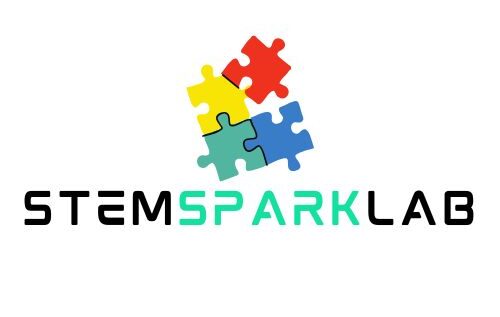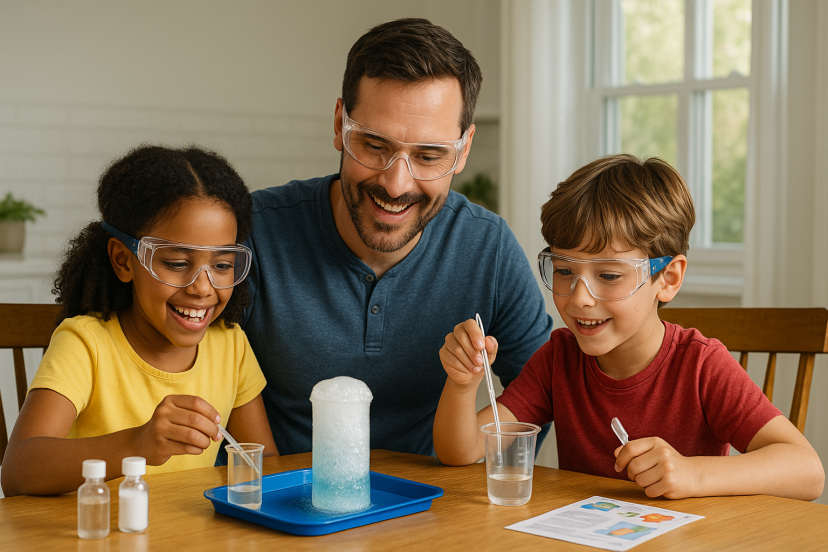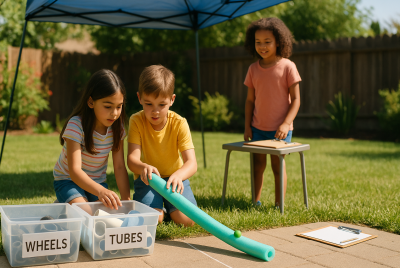Science Kits for Kids: Fun, Hands-On Learning at Home
We may earn a commission for purchases made using our links. Please see our disclosure to learn more.
You know that sparkle kids get when they finally see how something works? Science kits for kids bottle that moment. Instead of memorizing facts, your child gets to mix, wire, build, test, and ask “what if…?” This guide will help you choose the right kit, avoid duds, and make every experiment feel like an adventure.
Affiliate note: I may earn from qualifying purchases at no extra cost to you.
Why science kits for kids are totally worth it
When children pour vinegar into a beaker or snap a circuit into place, they’re doing more than playing—they’re building curiosity, confidence, and real-world problem-solving. And because kits are structured, you don’t need to reinvent the wheel to run a great activity at home or in a small group.
How to pick the right kit by age
- Ages 3–5: Choose large, kid-safe tools (droppers, beakers) and simple cause-and-effect experiments.
- Ages 6–8: Chemistry sets and crystal kits shine—clear steps, quick wins.
- Ages 8–12: Electronics, robotics, and physics kits with open-ended challenges.
- Tweens/teens: Coding, microscopes, and advanced chemistry/engineering kits.
Quick tip: Match the kit to your child’s attention span. A 20–30 minute build beats a two-hour odyssey if you’re just starting out.
Safety and supervision (made simple)
- Scan the age rating and any chemical warnings.
- Wear goggles when mixing, and keep pets and snacks off the lab table.
- Have a “what to do if it spills” plan (paper towels + baking soda handle most mini-messy moments).

Types of science kits (so you can shop smart)
- Chemistry sets (reactions, color changes)
- Electronics kits (circuits, switches, buzzers)
- Geology & crystal kits (grow, observe, display)
- Microscope & nature kits (collect, observe, record)
- Engineering & robotics (build, iterate, code basics)
Our selection criteria (what we looked for)
- Clear instructions with pictures
- Reusable parts or multiple experiments
- Age-appropriate challenge (wins come early, depth comes later)
- Durability (thicker plastic, snap-fit parts)
- Learning value (real vocabulary, real skills)
Best science kits for kids: quick picks
- Best first lab (ages 3–6): A colorful, kid-safe lab set with big tools.
- Best starter chemistry (6+): A kit with 8–12 quick experiments.
- Best crystals (8+): Fast-growing, light-up display for instant “wow.”
- Best electronics (8+): Snap-together circuits with 100+ projects.
- Best preschool-to-K transition (5+): Hands-on lab with cards and tools.
🔹 Top 5 Science Kits for Kids (Tested & Trusted)
Links appear in this section and the research section only.
1) Snap Circuits Jr. SC-100 (Electronics, 8+)
Short description: Snap-together components make real circuits—no soldering, no tools.
- Features: 100+ projects, color manual, 28–30 snap parts, expandable with other kits.
- Pros: Super durable, instant feedback (things light up or buzz), frustration-free builds.
- Cons: Requires AA batteries; projects are guided (less open-ended early on).
- Who it’s for: Tinkerers who love switches, lights, and hands-on engineering.
- Review snapshot: Parents love the “no-mess, real results” builds; a few wish for more storage.
2) National Geographic Mega Crystal Growing Kit (Chemistry/Geology, 8+)
Short description: Grow six colorful crystals in a few days and display them on a light-up base.
- Features: 6 colors, silicone growing chambers, clear seed rocks, LED display, specimens + guide.
- Pros: Quick visible results; keeps kids engaged over multiple days.
- Cons: One-and-done for some supplies; needs patient setup.
- Who it’s for: Budding geologists and kids who love dramatic before/after reveals.
- Review snapshot: High marks for directions and wow-factor; some note careful measuring is key.
3) Learning Resources Primary Science Lab Activity Set (Lab Tools, 3+)
Short description: Oversized beakers, test tubes, and droppers sized for little hands.
- Features: ~22 pieces, 10 activity cards, durable wipe-clean plastic; ages 3+.
- Pros: Invites pretend play and real measurement; easy to wash and re-use.
- Cons: You provide pantry supplies (vinegar, baking soda, etc.).
- Who it’s for: Preschoolers who want “real scientist” tools without tiny parts.
- Review snapshot: Families love the quality and activity cards; a few want more experiments included.
4) Thames & Kosmos Kids First: Science Laboratory (5+)
Short description: A gentle ramp-up into early chemistry and observation with sturdy tools.
- Features: 24 tools, 16-page manual, 10 experiment cards, storage case.
- Pros: Great scaffolding; cards keep sessions short and achievable.
- Cons: More “guided exploration” than wild tinkering; supplies are basic.
- Who it’s for: Ages 5–7 stepping beyond pretend play into real experiments.
- Review snapshot: Praised for smart design and age fit; some wish for extra consumables.
5) Scientific Explorer My First Mind-Blowing Science (6+)
Short description: A classic starter kit—color-changing reactions, fizzy fun, and secret “messages.”
- Features: 11 activities, 20-piece set, step-by-step guide; ages 6+.
- Pros: Fast setups; great intro to acids/bases and observation.
- Cons: Single-use materials for several activities; adult supervision required.
- Who it’s for: Kids who want “wow” reactions in 15–25 minutes.
- Review snapshot: Big smiles for colorful reactions; occasional note that refills run out fast.
Comparison at a glance
| Model | Key Spec(s) | Warranty | Approx Price/Tier | Best For |
| Snap Circuits Jr. SC-100 | 100+ projects; ~28–30 snap parts; ages 8+ | Amazon return window; manufacturer support via Amazon | Mid ($25–$50) | Electronics beginners |
| Nat Geo Mega Crystal Growing | 6 fast-growing colors; LED display; ages 8+ | Amazon return window; brand support via Amazon | Mid ($25–$50) | Geology & showpieces |
| L.R. Primary Science Lab Set | ~22 pieces; 10 activity cards; ages 3+ | Product warranty info via Amazon; 30-day returns | Mid ($25–$50) | Preschool lab play |
| Thames & Kosmos Kids First | 24 tools; manual + 10 cards; ages 5+ | Amazon return window; manufacturer info via Amazon | Mid-Premium ($40–$60) | K-ready explorers |
| Scientific Explorer Mind-Blowing | 11 activities; 20 pieces; ages 6+ | Product warranty link + 30-day returns | Budget (≈$20–$25) | Quick chemistry wins |
Warranty & returns summarized from each product’s “Warranty & Support” or returns panel on Amazon.
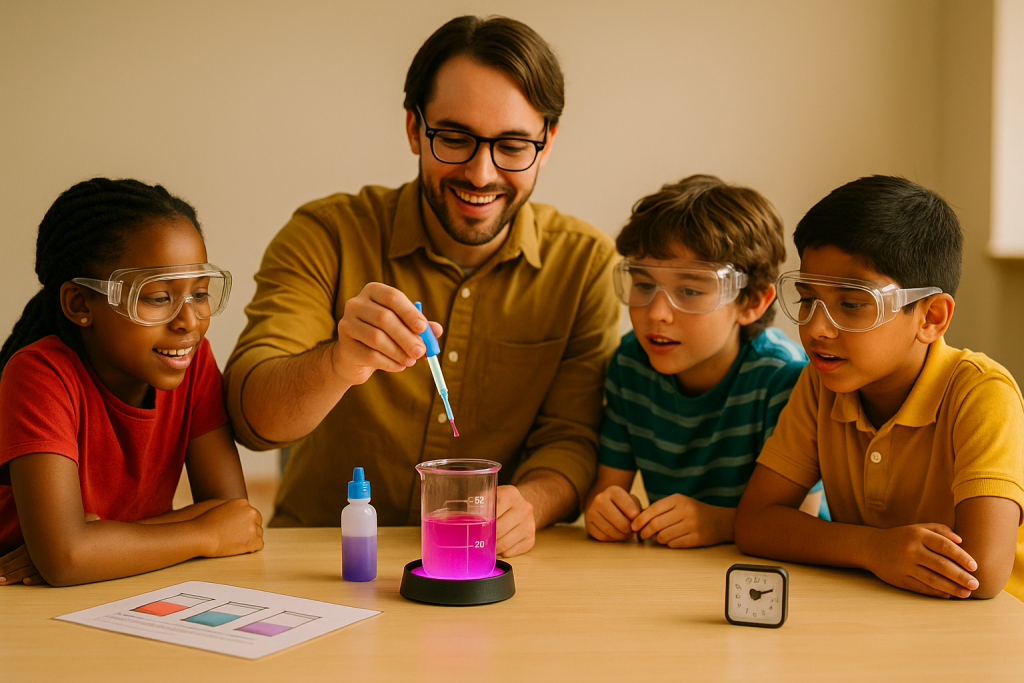
Turn a 30-minute experiment into a full learning moment
Before: Ask, “What do you think will happen?”
During: Pause and name what you see—bubbles, heat, color change, sound.
After: Try a variable twist (more/less powder, extra resistor, cooler water). That small tweak teaches the heart of science: change one thing, observe the difference.
Try these ideas
- Notebook nudge: Have your child sketch the setup—no art skills required.
- Vocabulary sprinkle: Words like reaction, circuit, hypothesis show up later in school.
- Presentation minute: “Explain this experiment to Grandma on video in 60 seconds.”
Keep curiosity alive: extension ideas
- Build a “mystery box” of safe pantry items they can test.
- Rotate stations: circuits one day, crystals the next, magnifiers on weekends.
- Pair kits with a nature walk or kitchen project so science shows up everywhere.
Budget vs premium: what really changes
Budget kits often trade durability and reusability for a lower upfront cost. Premium sets include thicker plastics, better manuals, and parts you’ll reuse across many sessions. If your child is hooked, upgrading saves money over time.
For homeschool families: set up a mini STEM lab
- Dedicate one bin to reusable tools (goggles, droppers, timer, scale).
- Keep a second bin for consumables (baking soda, citric acid, salt, coffee filters).
- Choose kits with modular parts (like snap circuits or standalone lab tools) so learning stacks.
For classrooms & clubs: what scales well
Look for kits that:
- Split into teams (multiple stations)
- Use easy-to-find refills
- Have clear visuals for demonstrations
Electronics stations + a chemistry station + a crystal station = one lively, inclusive STEM rotation.
Real-world skills kids practice without noticing
- Planning & sequencing: following steps in order
- Measurement: volume, time, and mass
- Troubleshooting: “What changed? What should we try next?”
- Communication: explaining what happened (and why it might have)
Troubleshooting when an experiment “fails”
It didn’t fail—it produced data. Ask:
- Did we measure correctly?
- Was the temperature different?
- Did we mix in the same order?
Then adjust one variable and try again. That’s science.
Want free, open-ended STEM challenges?
Explore playful prompts you can run with basic supplies in our STEM Playground challenges—great for rainy days, family nights, or warm-ups for bigger kits.
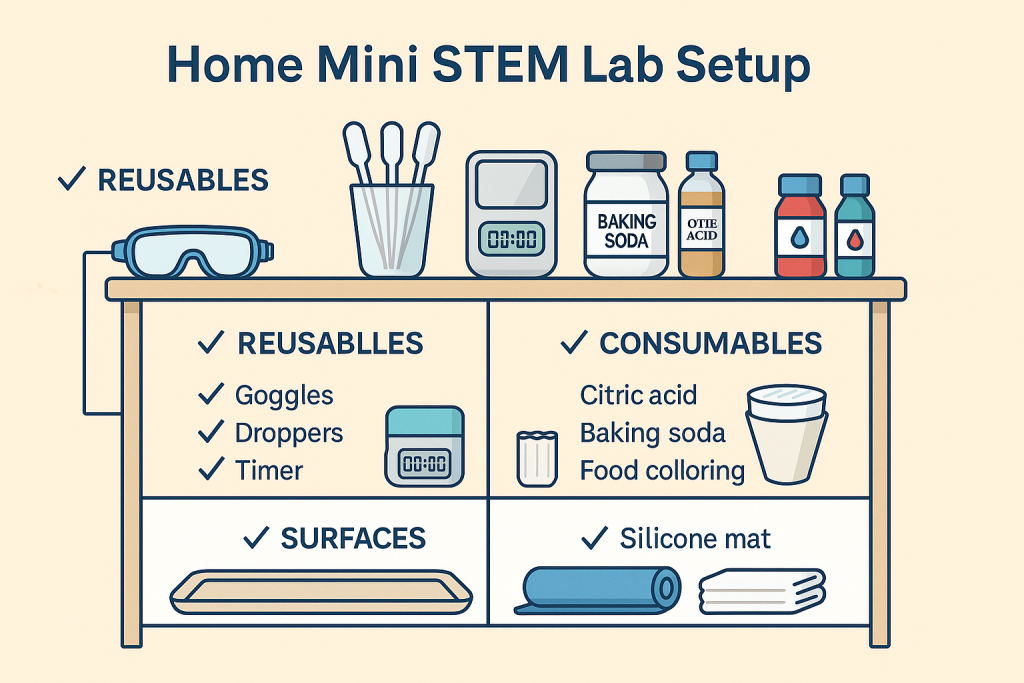
🧪 What the research says (why kits work)
Hands-on, inquiry-based activities are linked to gains in higher-order thinking (like analyzing and evaluating). A 2024 meta-analysis of inquiry-based science reported significant positive effects on students’ higher-order skills—exactly the kind cultivated by guided experiments and tinkering. Read the summary: Inquiry-based approaches improve higher-order thinking. ERIC
Quality out-of-school STEM experiences also matter. A National Academies report highlights that productive programs provide first-hand STEM experiences, connect to kids’ interests, and make explicit links across settings (home, museum, school)—a perfect fit for science kits used at home with gentle adult support. See: Identifying and Supporting Productive STEM Programs in Out-of-School Settings.
FAQs: science kits for kids
What’s the best age to start with science kits for kids?
Start as early as 3–4 with oversized, kid-safe tools. From 6–8, add chemistry and crystals. From 8+, introduce electronics, physics, and beginner robotics.
How much adult help do kids really need?
A little goes a long way. Read the first setup together, spot safety steps, and model “try, notice, adjust.” After a few runs, many kids lead the process themselves.
Are single-use kits worth it?
Yes—if they deliver clear learning and a memorable result (like crystals). Pair them with reusable tools so your science corner keeps going after the kit ends.
How do I keep mess to a minimum?
Pick a routine: tray + apron + paper towels within reach. Use a baking sheet as a spill zone and run messy activities near a sink or outside.
How do I know if a kit is age-appropriate?
Check the age rating, skim the manual (pictures help), and verify part sizes. If your child is advanced, choose a kit one step harder and scaffold with check-ins.
Conclusion: you’ve got this
Science kits for kids turn your table into a mini maker-space, one joyful “aha!” at a time. Start with a kit that fits your child’s age and interests, keep experiments short and fun, and celebrate curiosity over perfection. When you see that spark, lean in—because that’s the beginning of a lifelong love of learning.
Ready to explore? Pick one kit above and plan a 20-minute “try it” session this week. Your future scientist is already in the room.
